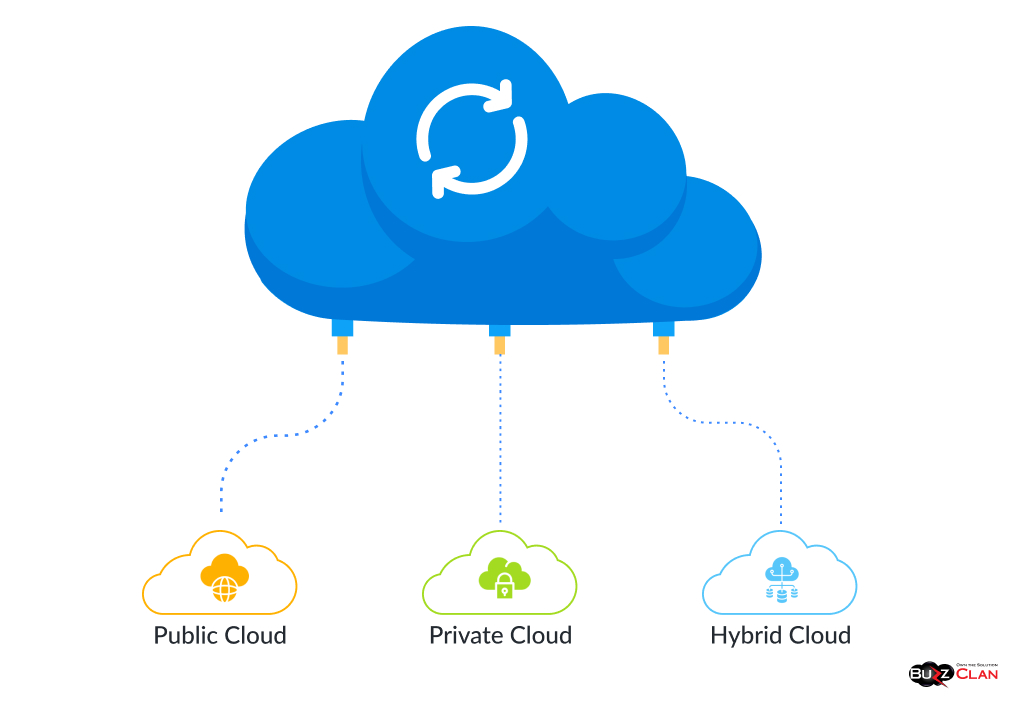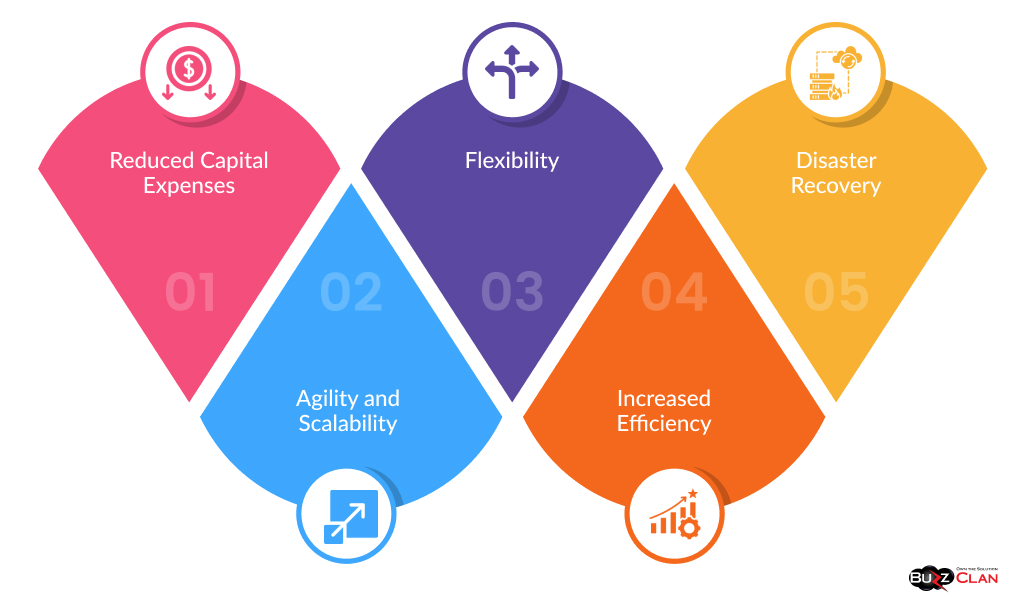Understanding Cloud Infrastructure: A Comprehensive Guide
Priyanshu Raj
Mar 6, 2024
Introduction to Cloud Infrastructure
Cloud infrastructure refers to the foundation of cloud computing that enables users to access on-demand computing resources over the Internet. The organized combination of storage, networking, servers, and data center facilities supports cloud computing services.
Cloud based infrastructure has become a critical component of the modern digital landscape, allowing businesses to scale their operations efficiently without needing expensive on-premise IT infrastructure and maintenance. With the growth of multi-cloud and hybrid cloud environments, understanding cloud infrastructure is key for organizations looking to unlock the benefits of the cloud.
Compared to traditional on-premise infrastructure, cloud-based infrastructure is highly agile and flexible. Resources can be provisioned and de-provisioned on-demand to align with business needs. Organizations only pay for what they use, following a consumption-based pricing model. The cloud provider handles maintenance and updates.
Cloud based infrastructure has enabled digital transformation across industries, allowing businesses to scale quickly, meet changing demands, and focus less on IT management. It is integral to leveraging emerging technologies like AI, big data analytics, IoT, blockchain, and more.
This comprehensive guide will explore the ins and outs of cloud infrastructure. We’ll cover the different types of cloud infrastructure, their role in cloud computing, Infrastructure as a Service (IaaS), integrating cloud services into business, and more. Let’s get started.
The Essential Building Blocks of Cloud Infrastructure
Cloud infrastructure consists of various hardware and software components working in harmony to enable on-demand access to compute resources. Let's examine some of the fundamental elements:
Compute Power Through Servers
The computational muscle behind cloud infrastructure comes from extensive networks of servers in data centers around the globe. These are powerful, high-capacity computers composed of processors, memory, storage and networking equipment. Cloud providers leverage virtualization to pool server capacity and parcel it out as elastic, scalable services.
Massive server farms allow providers to offer virtually limitless computing power for everything from hosting websites to training machine learning models. Groups of load-balanced servers underpin core infrastructure services like compute, database and application hosting.
Connectivity Through Networking
Sophisticated networking infrastructure is what knits geographically dispersed cloud servers and services together. Providers deploy hardware like switches, routers, gateways and load balancers to route traffic and enable high-speed communication.
Virtual private clouds, private links and access controls provide secure connectivity. Globally distributed CDNs optimize data transfers. Tools like load balancing and auto scaling dynamically distribute workloads across resources.
Robust networking is how cloud infrastructure delivers flexibility, performance and resilience.
Storage Capacity and Versatility
The cloud offers unlimited storage potential through networked storage infrastructure. This includes hard disk drives, solid state drives and tape drives located in data centers around the world. Cloud storage can be accessed across regions and latency zones for greater availability.
Providers offer various storage tiers and models like block storage, object storage and cold storage to suit different price points, performance levels and accessibility requirements. Storage capacity can be elastically scaled up as needed. Data is redundantly copied across facilities to guard against loss.
Software and Services for Simplified Usage
Cloud providers deliver user-friendly software and services to abstract infrastructure complexity. For example, developers can spin up VMs, launch containerized apps, execute code functions and analyze data through simple web dashboards and CLI tools rather than interfacing directly with physical hardware.
APIs and SDKs provide additional abstractions that allow users to programmatically interact with infrastructure services. Marketplaces offer pre-built applications and solutions for rapid deployment. Integrated monitoring and analytics provide visibility into resource utilization.
This powerful combination of robust hardware and simplified software unlocks immense infrastructure flexibility and agility.
The Different Types of Cloud Infrastructures

There are three main types of cloud infrastructure models:
Public Cloud Infrastructure
A public cloud infrastructure refers to cloud computing resources provided over the internet by third-party providers like AWS, Microsoft Azure, and Google Cloud Platform. The infrastructure is hosted at the provider's data centers and shared between different organizations (or tenants).
Public cloud platforms offer the most flexibility and scalability. Businesses can deploy services as needed without upfront infrastructure costs. However, there are some security and compliance concerns with the public cloud.
Private Cloud Infrastructure
A private cloud infrastructure denotes cloud computing resources used exclusively by a single organization. It may be hosted on-premise or externally with a third-party provider. The infrastructure allows businesses to maintain control and security while benefiting from scalability and self-service provisioning.
Private clouds are ideal for regulated industries like healthcare and banking that require greater data control. However, they are more expensive to set up and maintain.
Hybrid Cloud Infrastructure
A hybrid cloud combines private and public cloud infrastructure. Organizations can extend their private cloud to leverage public cloud benefits like agility and cost-efficiency. Critical services and data continue to remain in the private environment.
This model provides the most flexibility. Businesses can determine the ideal environment for each application and workload. However, it is quite complex to deploy and manage.
Oracle Cloud Infrastructure Explained
Oracle Cloud Infrastructure (OCI) provides on-demand computing, storage, networking, database, and analytics services over the Internet. It utilizes a next-generation architecture and high-performance infrastructure to deliver secure, scalable cloud solutions.
Some key advantages of OCI include:
- High security - Integrated security tools and isolation of workloads. Complies with various regulations.
- Flexibility - Provides multiple cloud deployment models like public, private, and hybrid.
- Agility - Quickly develop, test, and launch applications.
- Cost Savings - Pay-per-use model, autoscaling, and preemptible instances.
- Reliability - Robust SLAs with high uptime and built-in disaster recovery mechanisms.
OCI delivers enterprise-grade cloud infrastructure with greater transparency, flexibility, and cost-effectiveness compared to other major providers.
Cloud Infrastructure's Role in Cloud Computing
Cloud infrastructure is the foundation upon which cloud computing operates. It provides the performance, automation, orchestration, and governance required to enable cloud services.
The virtualization technology in cloud infrastructure abstracts physical infrastructure into virtualized, scalable resources that can be delivered on demand. Users can provision infrastructure like servers, storage, and networks as needed without regard for the underlying physical hardware.
Cloud infrastructure's self-service automation and ubiquitous network access allow for rapidly provisioning cloud computing services. For example, developers can leverage infrastructure services to launch new applications quickly without procuring physical resources.
Cloud infrastructure's distributed, on-demand nature supports other essential aspects of cloud computing like broad network access, resource pooling, rapid elasticity, and measured service.
Infrastructure as a Service (IaaS) Demystified

Infrastructure as a Service (IaaS) is a cloud computing service that allows users to access fundamental computing resources like servers, storage, and networking over the internet. Users can purchase these resources on-demand rather than having to build and maintain physical infrastructure.
Some key benefits of IaaS include:
- Reduced Capital Expenses - No upfront investment in infrastructure.
- Agility and Scalability - Quickly scale infrastructure up or down based on needs.
- Flexibility - There is a wide range of providers and services.
- Increased Efficiency - Automates infrastructure management.
- Disaster Recovery - Easily replicate resources as needed.
IaaS is offered by most major cloud providers today, including Amazon Web Services (AWS), Microsoft Azure, Google Compute Engine, Oracle Cloud Infrastructure, IBM Cloud, and Alibaba Cloud. These providers offer IaaS solutions like virtual machines, load balancers, IP addresses, VLANs, storage volumes, firewalls, CDNs, and more.
AWS established itself as an early IaaS leader with Amazon EC2 for computing and Amazon S3 for storage. However, many alternatives have emerged to compete on price, performance, global infrastructure, and hybrid capabilities.
The Significance of Cloud Servers
Cloud servers, also known as virtual servers, are an integral component of cloud infrastructure. They are simulated servers created through virtualization technology like hypervisor pooling and operating system partitioning.
Cloud servers provide the same functionality as physical servers but with added benefits:
- Flexibility - Increase server capacity by adding more CPU, RAM, storage, etc.
- Cost Efficiency - Pay only for the resources consumed.
- High Availability - Quickly recover from outages by provisioning new servers.
- Scalability - Spin up new servers instantly as per demand.
- Maintainability - The cloud provider handles maintenance and hardware failures.
The evolution of cloud servers has enabled the dynamic provisioning of computing resources that underlies IaaS. Physical server limitations no longer constrain organizations and can efficiently align server capacity with application demands.
Integrating Cloud Services in Business
Integrating cloud infrastructure unlocks immense business agility, efficiency, and innovation potential. APIs and cloud-based services allow companies to quickly build cloud-native applications, harness emerging technologies, and securely collaborate across environments
Application Programming Interfaces in Cloud Computing
APIs (Application Programming Interfaces) have become the fundamental building blocks of cloud platforms. They enable different cloud services to communicate with each other in a seamless, automated manner.
For instance, a cloud storage API allows developers to leverage object storage capabilities directly within applications rather than building the functionality from scratch. APIs abstract the underlying complexity of cloud infrastructure.
Cloud providers offer many APIs, SDKs, and other tools to simplify integration across services like compute, databases, analytics, messaging, workflows, and more. APIs transform rigid infrastructure into adaptable building blocks.
Impact on Business Efficiency and Scalability
By leveraging APIs and integrating SaaS applications, cloud data storage/analysis, and other cloud services, organizations can:
- Quickly build and iterate on cloud-native applications.
- Seamlessly connect legacy systems with new cloud capabilities.
- Unlock the potential of emerging technologies like AI/ML, IoT, etc.
- Securely share data and workflows across distributed ecosystems.
- Rapidly scale infrastructure and services to meet business demands.
- Reduce operational costs through automation and consumption-based pricing.
This agility and scalability accelerate innovation and time-to-market while allowing companies to focus less on infrastructure maintenance. Integrated cloud services deliver flexibility, resilience, and continuity for evolving business needs.
Conclusion: The Evolving Landscape of Cloud Infrastructure
Cloud infrastructure has undeniably transformed technology landscapes and business operations. As the foundation of cloud computing, it delivers automation, agility, resilience, scalability, and accessibility.
We continue to see rapid advances and innovation in cloud infrastructure offerings by public providers and private companies building their clouds. Edge computing is pushing infrastructure capabilities closer to end-users. Serverless computing aims to abstract infrastructure management even further.
Cloud interoperability and hybrid models are improving as businesses demand choice and control across environments. Security, compliance, and governance remain top priorities. Multi-cloud and hybrid cloud setups will become more prominent over time.
To stay competitive, companies must evolve with this landscape. Migrating piecemeal will no longer suffice. Businesses need coherent strategies to take full advantage of the promise of cloud and prepare for coming disruptions.
IaaS and PaaS can complement each other. PaaS builds on top of IaaS. IaaS provides infrastructure for PaaS while PaaS simplifies application deployment on IaaS.

Get In Touch
Follow Us
Table of Contents
- Introduction to Cloud Infrastructure
- The Essential Building Blocks of Cloud Infrastructure
- The Different Types of Cloud Infrastructures
- Oracle Cloud Infrastructure Explained
- Cloud Infrastructure's Role in Cloud Computing
- Infrastructure as a Service (IaaS) Demystified
- The Significance of Cloud Servers
- Integrating Cloud Services in Business
- Application Programming Interfaces in Cloud Computing
- Impact on Business Efficiency and Scalability
- Conclusion: The Evolving Landscape of Cloud Infrastructure
- Get In Touch
